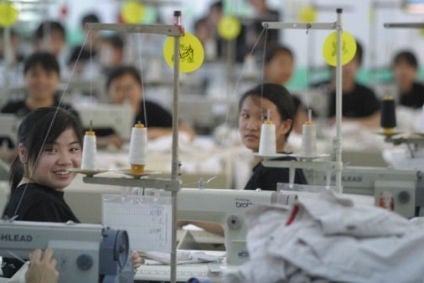
What do the changing dynamics of US apparel imports reveal about the shifting sourcing and supply chain strategies of US fashion brands and retailers? Dr Sheng Lu, assistant professor in the Department of Fashion and Apparel Studies at the University of Delaware, takes a look.
Import statistics released by the Department of Commerce’s Office of Textiles and Apparel (OTEXA) for 2017 show four critical patterns.
#1: Consumption demand drives apparel imports
US apparel imports overall mirror the pattern of apparel retail sales in the US market. Between 2010 and 2017, the value of US apparel retail sales has always been around three times as much as the value of US apparel imports.
How well do you really know your competitors?
Access the most comprehensive Company Profiles on the market, powered by GlobalData. Save hours of research. Gain competitive edge.

Thank you!
Your download email will arrive shortly
Not ready to buy yet? Download a free sample
We are confident about the unique quality of our Company Profiles. However, we want you to make the most beneficial decision for your business, so we offer a free sample that you can download by submitting the below form
By GlobalDataOver the same period, both the value of apparel retail sales and the value of apparel imports also grew at around 3.1% annually. This close relationship reflects the fact that the performance of the US economy is the leading factor shaping demand for imported apparel.
Specifically, the value of US apparel retail totalled US$260.5bn in 2017, an increase of 1.4% from a year earlier and much improved on the 0.4% growth between 2015 and 2016. Correspondingly, the value of US apparel imports reached US$80.29bn in 2017, slipping 0.5% from a year earlier and also recovering from a 5.6% decline between 2015 and 2016.
Because of an improving US economy and consumers’ growing spending on clothing, it is estimated that the value of US apparel imports could enjoy even faster growth in 2018.
#2: There are no near competitors for apparel ‘Made in China’
In 2017, the value of US apparel imports from China dropped 3.2% from a year ago, which also resulted in the shrinkage of China’s US market share to 33.7% from 34.6% in 2016. Nevertheless, of the total 106 categories of apparel in the OTEXA trade database, China remained the top supplier for as many as 87 categories (or 82%) in 2017.
In comparison, Vietnam was the top supplier for only five categories (mostly man-made fibre suits and trousers) and two categories for Bangladesh (cotton trousers and brassieres).
Moreover, China was not only the top supplier of a full range of apparel products, but also held the lion’s share of the market for them. Specifically, for the 87 categories of apparel where China was the top supplier, China’s average market shares reached 40.5%, which is 22.1 percentage points higher than the second-largest suppliers for these categories.
The result echoes the findings of the 2017 US Fashion Industry Benchmarking Study released by the US Fashion Industry Association (USFIA), which suggests that the unparalleled manufacturing capacity is one unique advantage of China as an attractive and competitive apparel sourcing destination for US companies.
#3: US fashion brands and retailers are diversifying their sourcing base
Notably, US apparel imports came from as many as 150 countries in 2017. Even more interesting, the Herfindahl Index, a commonly adopted measure of market concentration, declined from 0.17 in 2010 to 0.15 in 2017, meaning that overall, the US apparel import market is becoming less concentrated.
This is also consistent with results of the 2017 US Fashion Industry Benchmarking Study, which found that US companies are cautious about “putting too many eggs in one basket” because of the increasing uncertainty associated with apparel sourcing, from the threats of trade protectionism, various social and environmental compliance risks, to potential labour disputes.
Related to this, with the shifting comparative advantage in garment manufacturing among countries in the world, some apparel exporters, although still small in scale, are gradually becoming emerging sourcing bases for US companies.
#4: Western hemisphere vs Asia sourcing
US fashion brands and apparel retailers continue to source from Asia primarily for price, and source from the western hemisphere for speed-to-market.
Interestingly, despite the reported rising labour cost, apparel ‘Made in Asia’ is becoming less expensive in the US market. Between 2016 and 2017, the average price of US apparel imports from China decreased by as much as 4.9%. The price change of US apparel imported from Vietnam (down 0.4%), ASEAN members (down 0.5%) and Bangladesh (down 4.1%) demonstrated a similar pattern.
Meanwhile, apparel made in the western hemisphere is becoming relatively more expensive in the US market. Over the same period, the average price of US apparel imports from NAFTA and DR-CAFTA members went up by 3.6% and 1.9% respectively.
However, despite the growing disadvantage in price, the value of US apparel imports from Mexico and Canada enjoyed robust growth of 5.3% and 7.7% respectively in 2017 from a year earlier.
The result confirms the increasing importance of speed-to-market in US fashion apparel companies’ sourcing decisions, and reiterates the strategic importance of doing no harm to the western hemisphere apparel supply chain and keeping it functioning well.








